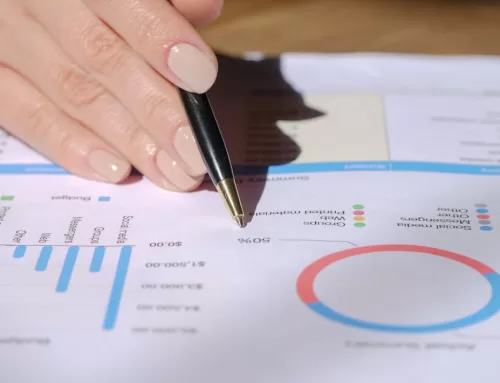As more and more firms make the move from PC and server-based QB Desktop (“QBD”) to cloud-based QuickBooks Online (“QBO”) file size can be a concern, especially for QuickBooks Desktop files containing many years of transactions. However this conversion is a good time to purge your system of old and useless entries (vendors and customers that have long departed the scene) and streamline things for the future. This article could be useful to anyone in cleaning things up before QBO import, and especially if QBO warns that your QBD exports are too big.
First a few relevant factoids to keep in mind:
- Backups are created during this process. Be sure that this is placed in a secure and safe cloud location, or on USB flash drive, CD or other removable storage device.
- The portable file is saved as a “.qbm” file name.
- Remember that this is an important safeguard against data destruction, data loss or data corruption.
- This is another example in life where overall size does not matter. However targets do: QBO only allows 350,000 targets. (There is only one Source in each transaction but there can be many targets. For example in QBD, open an invoice or sales receipt and type Control-Y: The first row is source data and all of the others are all target data.
- To see the number of targets in your QBD file:
- On Windows: Press F2.
- On Mac: Press CMD (?) +1.
- See the Total Targets number on the resulting information screen.
To reduce the number of QB file targets, consider CONDENSING the file before import, however some reports may not match after condensing. (File > Utilities > Condense Data).
Here is how to continue.
In QB Pro or QBPremier 2012 or QB Enterprise 12.0 and later
Close all QB windows (Windows > Close All).
File > Utilities > Condense Data
Select Yes to the question about Budget?
In the next window, select to not include Transactions before the chosen date.
QB will then delete closed transactions on and before this date. Choose the last day of the month if inventory tracking is used so that average costing will remain correct.
Next.
Decide the preferred method to summarize the transactions being removed.
Next. (And don’t be shy about selecting “Help me choose”).
There are a few “Optionals” that may be selected so decide on those
Next.
Now for the big moment: Click “Begin Condense.”
QuickBooks Pro/Premier 2006 to 2011 or Enterprise Solutions 6.0 to 11.0
Close all QB windows (Windows > Close All).
QB File menu > Utilities > Clean Up Company Data.
For “Budget data may be moved during cleanup. Do you want to continue anyway?” > Click “Yes.”
In the next window, select to not include Transactions before the chosen date.
QB will then delete closed transactions on and before this date. Choose the last day of the month if inventory tracking is used so that average costing will remain correct.
Next.
Decide on any of the “Select Additional Criteria for Removing Transactions”
Next.
Optional: Decide on Select any of the checkboxes under Select Unused List Items to Remove.
Next.
Now for the big moment: Click “Begin Clean Up.”
Select OK below the message about making a backup before cleaning up the data file.
QuickBooks for Mac
Close all QB windows.
QB will then delete closed transactions on and before this date. Choose the last day of the month if inventory tracking is used so that average costing will remain correct.
Click “OK”. Then go with the flow as QuickBooks makes a file backup file before Condense File begins by clicking “OK”.
Now for the big moment: Click “Condense.”
As soon as QuickBooks Condense File is finished, do F2 again to see if there are now have less than 350,000.
Then continue on to the other steps and convert you QuickBooks Desktop file and import to QuickBooks Online.
Besides the QBB backup, QuickBooks Desktop also creates an archived copy of the QBW file during the condense process where the default name is “
Remember to that the archived / backup can be restored back to QBD at any time.
If there are performance issues, the Condense Data Utility should not be your first choice to improve performance. There are several reasons for this but perhaps the most important is that some prior history will not be imported to QBO
Once your portable file is saved, the .qbm can be restored. QuickBooks simply decompresses the .qbm file and then rebuilds the company file. Depending upon file size, this may take a few minutes.
Here is how to Restore a qbm:
File > Open or Restore Company > Restore a Portable file > Next.
Select the location and file name of the desired .qbm > Open > Next.
Now see the “Open a Saved Company File” window.
Rename the file by entering a new name in the file name area (to avoid overwriting the existing file).
Now for the big moment: Click “Begin Restore” and QuickBooks restores the .qbm the portable file to a regular a .qbw extension.
QB then guides your through another backup, this time of the new company file.
Check the file size again. If the file is more than 350,000 targets then go back and repeat the process and remove as much data as possible. The .qbw file created from the portable company file might be smaller than your condensed .qbw file. This is normal.
As soon as the restore is finished, open the .qbw and do F2 again to see if there are now have less than 350,000 targets. If this number is more that 350,000 you will likely need to condense the original qbw again, this time selecting to not include Transactions before a later (condense) date. But remember that this data is not lost forever: you may simply open your venerable QuickBooks Desktop file at any time to see this.
We can help. QB-LA can move your QuickBooks Desktop data into QuickBooks Online and set up everything in the best possible way . Contact us today and let’s talk!







